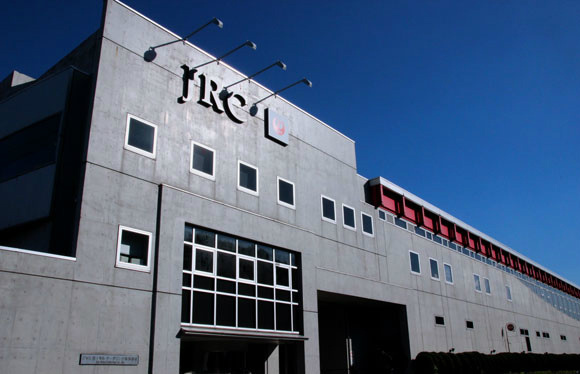
Airline meals once had a pretty bad rap, but in-flight food has improved quite a bit since Seinfeld was wondering what its deal was. And really, isn’t it kind of amazing that you can get a hot meal at all when you are barreling through the sky at 600 miles per hour in a small metal tube?
For everyone that has ever wondered how that perfectly portioned food turns up on your tray, we’ve gone behind that scenes at the in-flight meal production center for Japan Airlines (JAL) to get the scoop.
JAL Royal Catering (JRC) is located not far from Narita International Airport and provides meals for 10 of JAL’s international routes originating there, including Los Angeles, London and Paris flights. Their responsibilities include collecting and cleaning of tableware, preparation of food, arrangement of meals and delivery to the airport. They recently allowed RocketNews24 to visit their facility. Here are some of our impressions from the trip.
- The human touch
The most surprising thing for us was that it didn’t fit with our image of a factory at all. Where were the huge machines churning out mass quantities of identical plastic-wrapped thingamajigs? At JRC, each meal is made by human hands, with very little reliance on conveyor belt-type assembly lines.
Granted, the large amounts of tableware are washed in a huge machine, but then each item is individually checked to make sure it’s clean. If there is any remaining dirt or cloudiness, it is washed and polished by hand. Pretty impressive!
- More kitchen than factory
The food preparation area looks more like something you would find in a cooking school. Staff stand around a large working table. The preparations, arrangement and loading onto airplane carts is all done by hand there too, not just for first and business class meals but for economy class grub as well. In one day, the staff prepare an impressive 4,000 meals, with differing menus for each route and class.
Additionally, JRC operates under a policy that food must be served within 24 hours of being made. Under a normal schedule, this is a punishing pace, but when flight delays and cancellations occur, those meals sometimes need to be completely remade.
Another difference from regular food service is that in-flight meals have to be cooked, then cooled for storage and reheated in the air, so staff have to closely monitor cooling times and temperatures to ensure freshness and flavor.
- The JAL edge?
The handmade quality of the food was clear to us now, but we also wondered if there were any other points that make JRC stand out from the competition. We asked the staff how their work would compare to, say, rival All Nippon Airways. They say JAL has superior menu development.
For example, JAL collaborates with famous chefs or popular chain restaurants to produce special menu items. Other airlines offer similar promotions, but according to JRC, that often involves just accepting a recipe from their partner, rather than working together with them to develop something new.
At JAL, the partner submits a recipe, then JRC does a trial preparation, then the finished product is sent back to the partner so they can taste it, make comments, and offer improvements. JAL’s executive chef is also involved in the development.
Compared with a restaurant on the ground, in-flight meals have certain special restrictions on ingredients and preparation. In order to meet those restrictions, a recipe sometimes has to be altered time and time again and sent back to the executive chef and the partner to taste and approve. It can take three or four months just to develop one menu item!
- Thanks, JRC!
We were really impressed by the attention to detail and amount of effort expended to produce an in-flight meal, down to the way the staff carefully wrapped the silverware neatly in the napkin. We marveled at how many people, from development to delivery, were doing their utmost to make sure passengers have a nice meal. Kind of makes you see that little tray of food in a while new light, doesn’t it?
Check out the photos we took during our visit below!
▼ Because they are handling food, there are strict rules to follow in order to enter.
▼ This is where tableware returning from the planes is washed.
▼ After being washed, they are checked by hand for dirt or cloudiness.
▼ Only once they pass muster are they loaded up to go back on the plane.
▼ Here cutlery is being wrapped up for business class meals.
▼ The refrigerator
▼ Meat and produce are carefully arranged by freshness.
▼ On to the prep rooms! Here, appetizers and other unheated dishes are prepared in the “cold kitchen”.
▼ Main dishes and other heated foods are prepared in the “hot kitchen”.
▼ The hot kitchen refrigerator. In order to prevent the spread of bacteria, the temperature of cooked food has to be lowered below 4 degrees C within four hours of cooking.
▼ Both the food and prep stations are checked for bacteria in-house
▼ The “dishing group” arranges the food
▼ All of the food has to pass through a metal detector
▼ Once it passes inspection, it can be packaged
▼ The “meal set group” arranges the packaged food onto trays and loads them on the carts
▼ Here is a collaboration with well-known Tokyo restaurant Ore no Italian French, served in economy class
▼ The finished meals have to be returned to refrigeration within two hours
▼ Meals, kept below 10 degrees, are ready to ship out with drinks
▼ Bye-bye!
Photos: RocketNews24
[ Read in Japanese ]

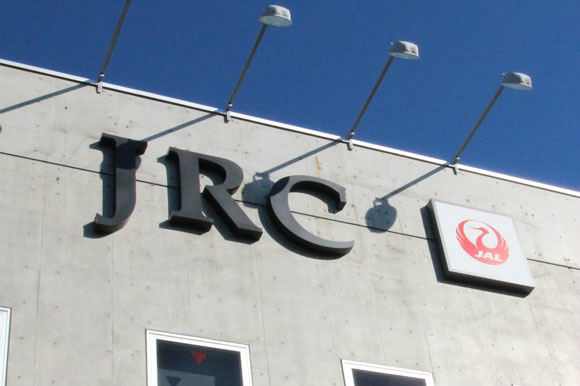
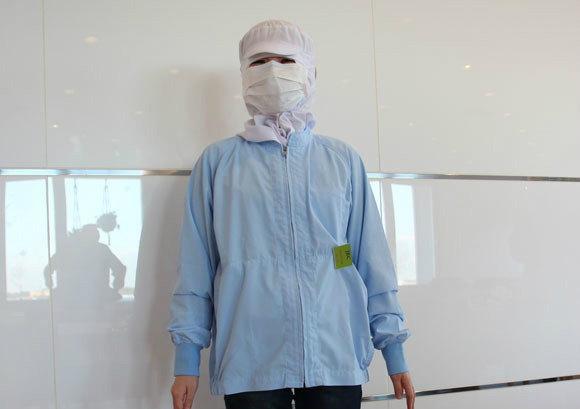
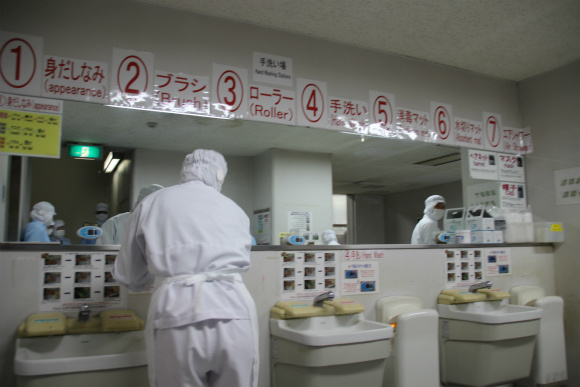

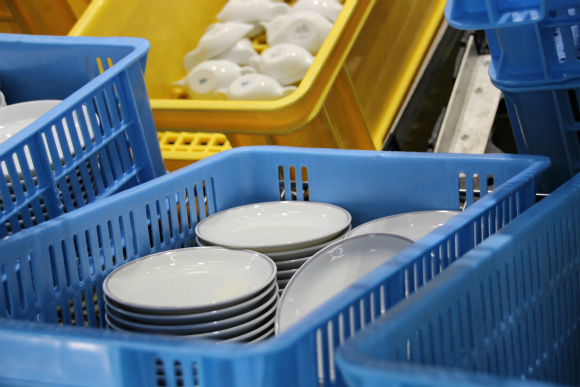
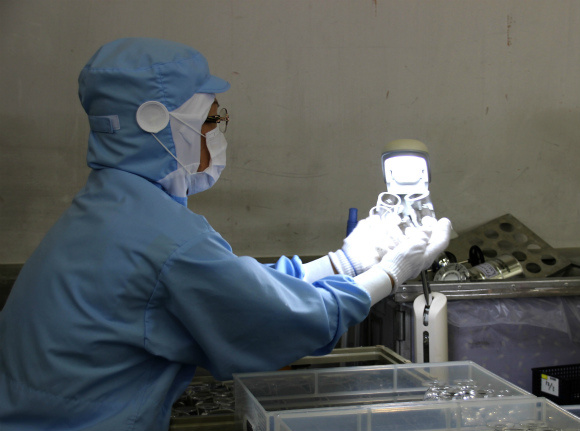
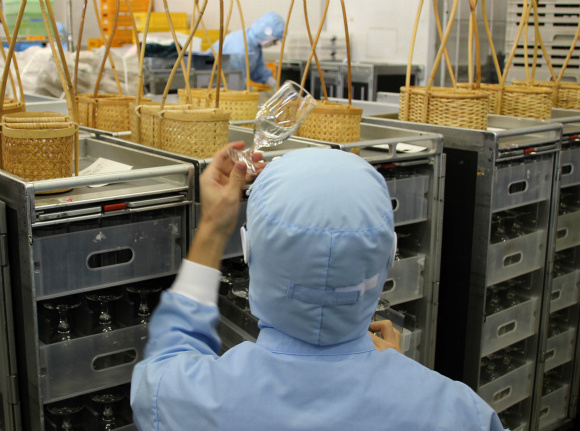
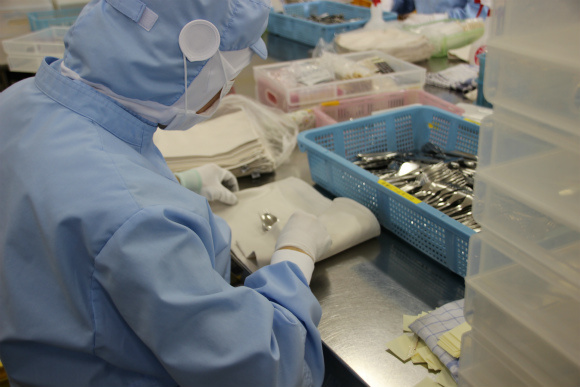
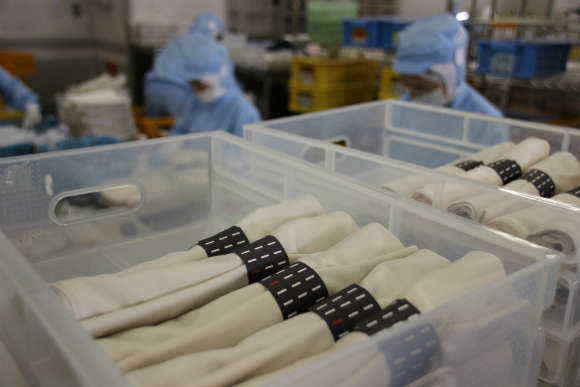
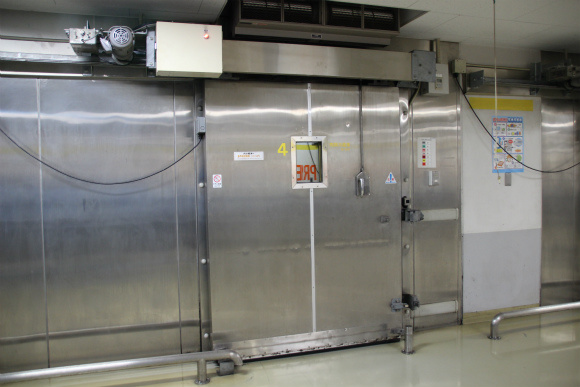
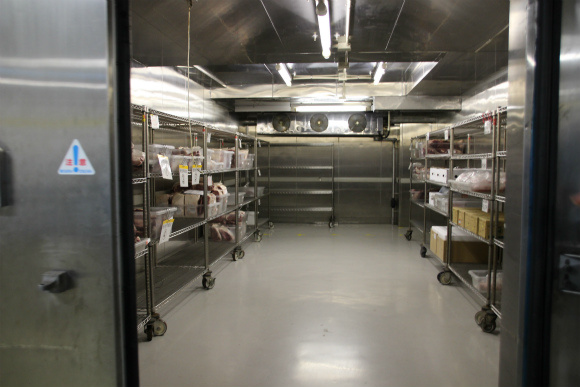
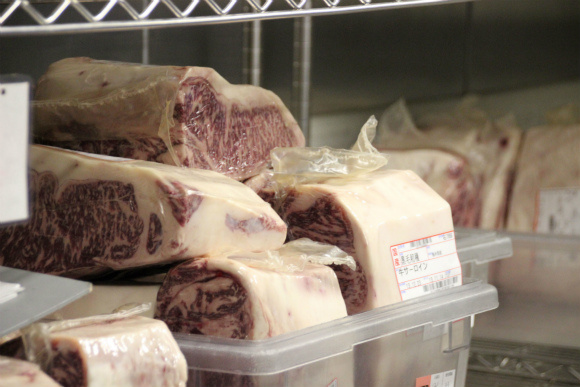
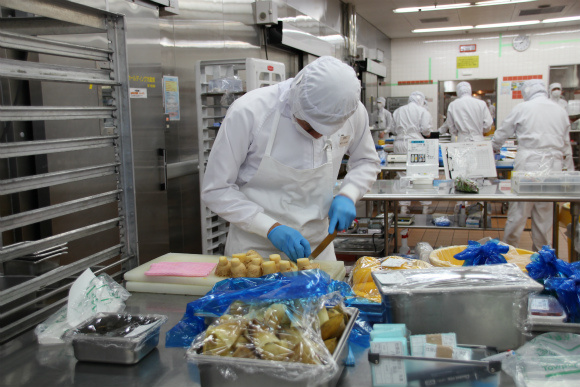
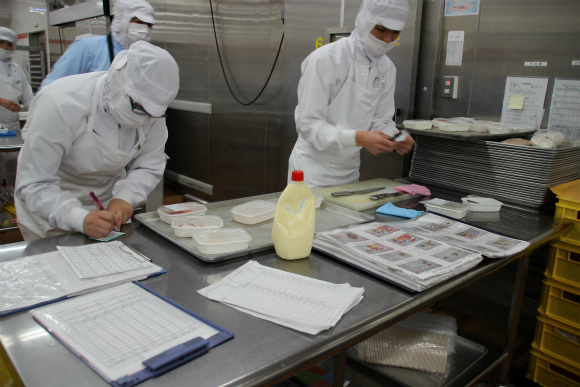
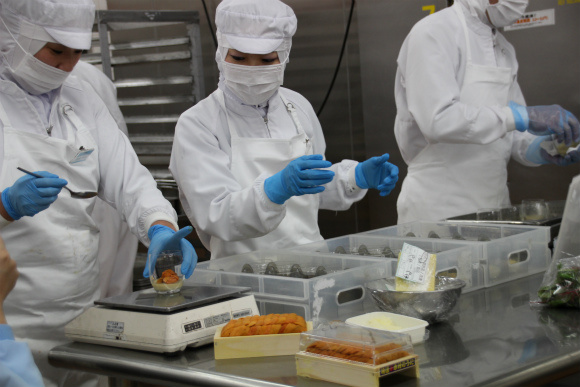
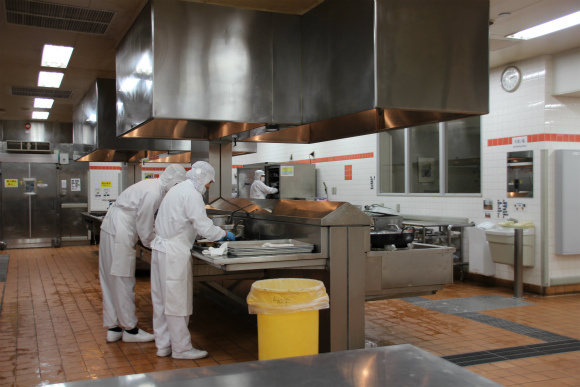

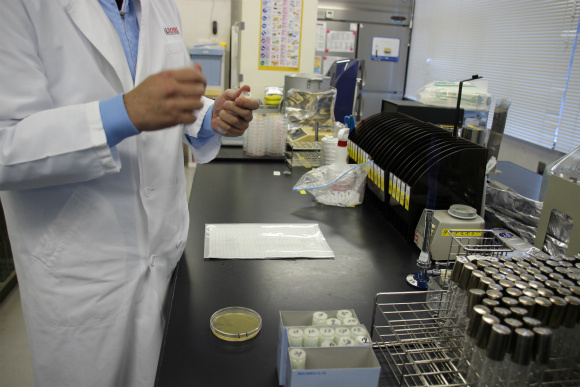
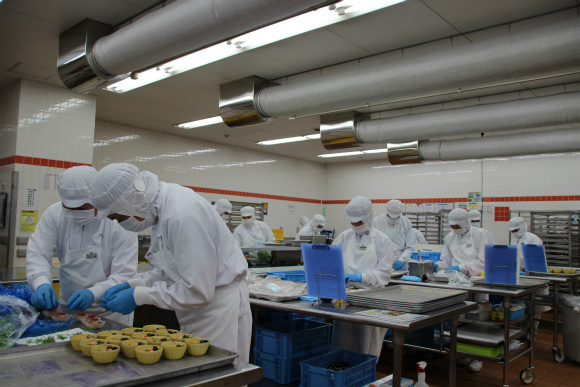
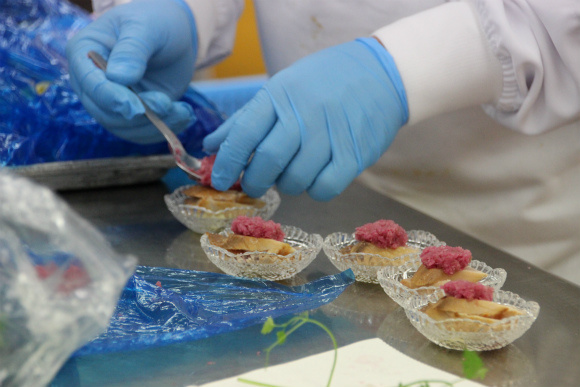
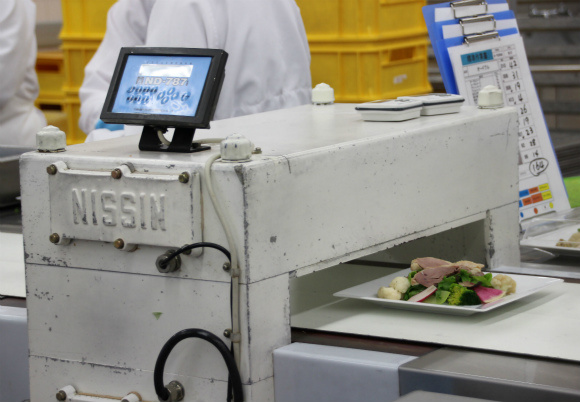
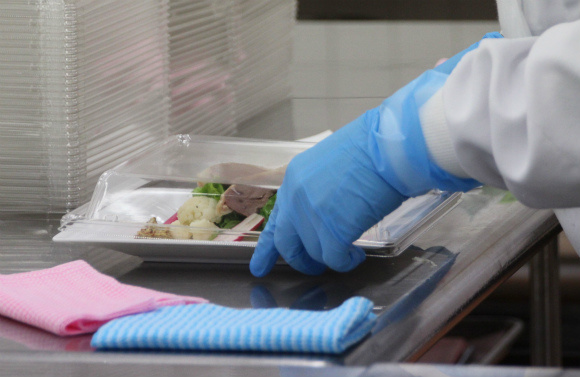
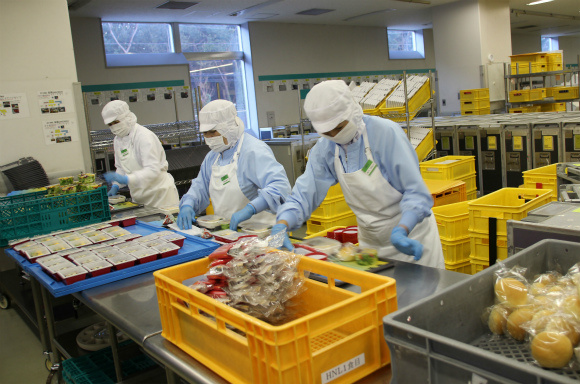
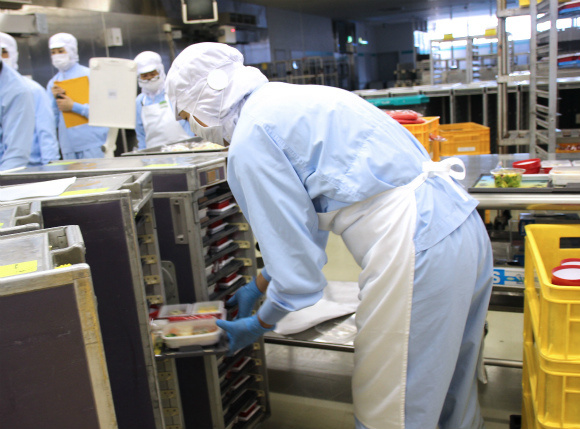
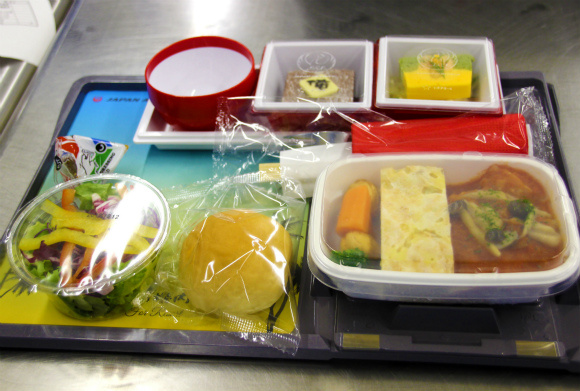
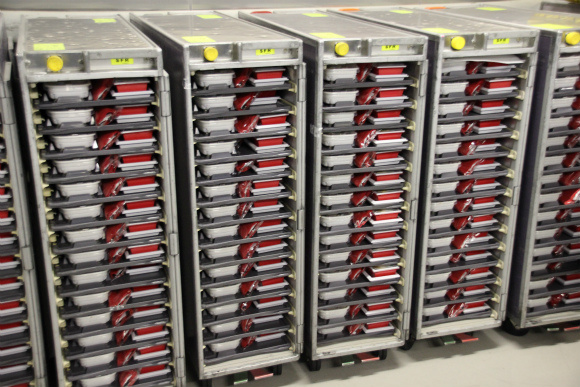

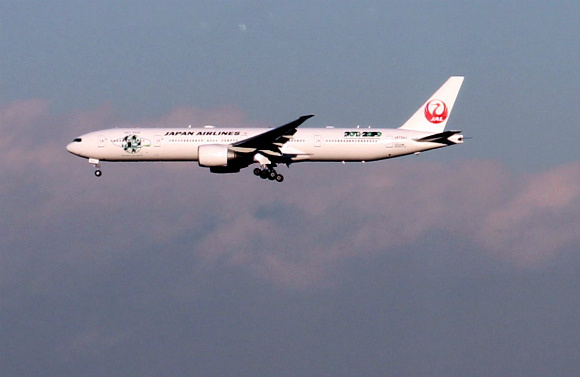
 Japan Airlines concludes cabin attendant drank bottle of champagne during flight
Japan Airlines concludes cabin attendant drank bottle of champagne during flight Hate airline food? ANA now lets you cancel in-flight meal prior to boarding, switch to a sandwich
Hate airline food? ANA now lets you cancel in-flight meal prior to boarding, switch to a sandwich Vending machine with in-flight meals becomes a sell-out hit at Haneda Airport in Japan
Vending machine with in-flight meals becomes a sell-out hit at Haneda Airport in Japan 16 photos that show why Singapore has the world’s best airline
16 photos that show why Singapore has the world’s best airline JAL system makes air travel easier and lets you keep laptops, liquids in bag for security check
JAL system makes air travel easier and lets you keep laptops, liquids in bag for security check Disney princesses get official manga makeovers for Manga Princess Cafe opening in Tokyo
Disney princesses get official manga makeovers for Manga Princess Cafe opening in Tokyo Foreign English teachers in Japan pick their favorite Japanese-language phrases【Survey】
Foreign English teachers in Japan pick their favorite Japanese-language phrases【Survey】 Is the new Shinkansen Train Desk ticket worth it?
Is the new Shinkansen Train Desk ticket worth it? Beautiful new Final Fantasy T-shirt collection on the way from Uniqlo【Photos】
Beautiful new Final Fantasy T-shirt collection on the way from Uniqlo【Photos】 Osaka’s creepy cute mascot speaks for first time, adds more fuel the creepy OR cute debate【Video】
Osaka’s creepy cute mascot speaks for first time, adds more fuel the creepy OR cute debate【Video】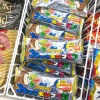 Kyushu-exclusive Black Mont Blanc goes nationwide in a “Special” way
Kyushu-exclusive Black Mont Blanc goes nationwide in a “Special” way Starbucks releases a special sparkly tumbler in Japan to support diversity
Starbucks releases a special sparkly tumbler in Japan to support diversity Hey, Japanese taxi driver! Take us to your favorite restaurant in Tsuruga City!
Hey, Japanese taxi driver! Take us to your favorite restaurant in Tsuruga City!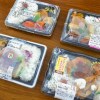 We taste makunouchi bento at four Japanese convenience store chains【Taste comparison】
We taste makunouchi bento at four Japanese convenience store chains【Taste comparison】 Japanese hotel has rooftop hot spring bath, unlimited sushi and alcohol, costs less than 80 bucks
Japanese hotel has rooftop hot spring bath, unlimited sushi and alcohol, costs less than 80 bucks Our Japanese reporter visits Costco in the U.S., finds super American and very Japanese things
Our Japanese reporter visits Costco in the U.S., finds super American and very Japanese things New Studio Ghibli bedding sets are cool in all senses of the word
New Studio Ghibli bedding sets are cool in all senses of the word We try out “Chan Ramen”, an underground type of ramen popular in the ramen community
We try out “Chan Ramen”, an underground type of ramen popular in the ramen community New Pokémon cakes let you eat your way through Pikachu and all the Eevee evolutions
New Pokémon cakes let you eat your way through Pikachu and all the Eevee evolutions There’s a park inside Japan where you can also see Japan inside the park
There’s a park inside Japan where you can also see Japan inside the park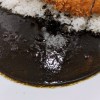 Japanese black curry “experiment” takes place at an unlikely restaurant branch in Tokyo
Japanese black curry “experiment” takes place at an unlikely restaurant branch in Tokyo Japanese convenience store packs a whole bento into an onigiri rice ball
Japanese convenience store packs a whole bento into an onigiri rice ball New definition of “Japanese whiskey” goes into effect to prevent fakes from fooling overseas buyers
New definition of “Japanese whiskey” goes into effect to prevent fakes from fooling overseas buyers Uniqlo opens its first Furugi Project secondhand clothing pop-up shop in Tokyo
Uniqlo opens its first Furugi Project secondhand clothing pop-up shop in Tokyo Studio Ghibli releases Kiki’s Delivery Service chocolate cake pouches in Japan
Studio Ghibli releases Kiki’s Delivery Service chocolate cake pouches in Japan Japan’s bone-breaking and record-breaking roller coaster is permanently shutting down
Japan’s bone-breaking and record-breaking roller coaster is permanently shutting down Toyota built a life-sized Miraidon Pokémon and are letting people test drive it this weekend
Toyota built a life-sized Miraidon Pokémon and are letting people test drive it this weekend Foreign passenger shoves conductor on one of the last full runs for Japan’s Thunderbird train
Foreign passenger shoves conductor on one of the last full runs for Japan’s Thunderbird train Kyoto bans tourists from geisha alleys in Gion, with fines for those who don’t follow rules
Kyoto bans tourists from geisha alleys in Gion, with fines for those who don’t follow rules Studio Ghibli unveils Mother’s Day gift set that captures the love in My Neighbour Totoro
Studio Ghibli unveils Mother’s Day gift set that captures the love in My Neighbour Totoro Domino’s Japan now sells…pizza ears?
Domino’s Japan now sells…pizza ears? New Japanese KitKat flavour stars Sanrio characters, including Hello Kitty
New Japanese KitKat flavour stars Sanrio characters, including Hello Kitty Sales of Japan’s most convenient train ticket/shopping payment cards suspended indefinitely
Sales of Japan’s most convenient train ticket/shopping payment cards suspended indefinitely Sold-out Studio Ghibli desktop humidifiers are back so Totoro can help you through the dry season
Sold-out Studio Ghibli desktop humidifiers are back so Totoro can help you through the dry season Japanese government to make first change to romanization spelling rules since the 1950s
Japanese government to make first change to romanization spelling rules since the 1950s Ghibli founders Toshio Suzuki and Hayao Miyazaki contribute to Japanese whisky Totoro label design
Ghibli founders Toshio Suzuki and Hayao Miyazaki contribute to Japanese whisky Totoro label design Doraemon found buried at sea as scene from 1993 anime becomes real life【Photos】
Doraemon found buried at sea as scene from 1993 anime becomes real life【Photos】 Tokyo’s most famous Starbucks is closed
Tokyo’s most famous Starbucks is closed One Piece characters’ nationalities revealed, but fans have mixed opinions
One Piece characters’ nationalities revealed, but fans have mixed opinions We asked a Uniqlo employee what four things we should buy and their suggestions didn’t disappoint
We asked a Uniqlo employee what four things we should buy and their suggestions didn’t disappoint Princesses, fruits, and blacksmiths: Study reveals the 30 most unusual family names in Japan
Princesses, fruits, and blacksmiths: Study reveals the 30 most unusual family names in Japan Studio Ghibli’s new desktop Howl’s Moving Castle will take your stationery on an adventure
Studio Ghibli’s new desktop Howl’s Moving Castle will take your stationery on an adventure Do ANA international inflight meals taste better on the ground than they do in the air?
Do ANA international inflight meals taste better on the ground than they do in the air? Japan Airlines abolishes use of “ladies and gentlemen” in English for sake of sexual minorities
Japan Airlines abolishes use of “ladies and gentlemen” in English for sake of sexual minorities Japan Airlines staff reassigned to work as shrine maidens during coronavirus travel downturn
Japan Airlines staff reassigned to work as shrine maidens during coronavirus travel downturn Secret staff cafeteria in Tokyo is a hidden gem you won’t find in travel guides
Secret staff cafeteria in Tokyo is a hidden gem you won’t find in travel guides We make anime food from Studio Ghibli movie Laputa: Castle in the Sky
We make anime food from Studio Ghibli movie Laputa: Castle in the Sky Could you eat 50 beef cutlet refill pieces? If so, this Japanese restaurant will let you eat for free
Could you eat 50 beef cutlet refill pieces? If so, this Japanese restaurant will let you eat for free Burger King opens world’s first Ghost Store in Shibuya with the only Ghost Whopper in Japan
Burger King opens world’s first Ghost Store in Shibuya with the only Ghost Whopper in Japan The delicious food of Japan’s gourmet hospitals: Ramen, hotpot, smoked duck, and more
The delicious food of Japan’s gourmet hospitals: Ramen, hotpot, smoked duck, and more Peace Kitchen: promoting Japanese food (and maybe something more) across the world
Peace Kitchen: promoting Japanese food (and maybe something more) across the world Japan’s “First Date Awards” reveals the best places to wine and dine when dating in Tokyo
Japan’s “First Date Awards” reveals the best places to wine and dine when dating in Tokyo Tiny fish-shaped soy sauce bottles repurposed for sanitizers
Tiny fish-shaped soy sauce bottles repurposed for sanitizers Flight that crashed in 1985 spotted landing in Narita Airport 35 years later
Flight that crashed in 1985 spotted landing in Narita Airport 35 years later Japanese woman’s husband accidentally finds a sweet new use for her bra pads 【Photos】
Japanese woman’s husband accidentally finds a sweet new use for her bra pads 【Photos】 Singapore Airlines adds country’s attractions to safety video so passengers actually watch【Video】
Singapore Airlines adds country’s attractions to safety video so passengers actually watch【Video】 Behind the counter: what it’s like to work as All Nippon Airways ground staff【Video】
Behind the counter: what it’s like to work as All Nippon Airways ground staff【Video】 Kyoto yakitori restaurant earns Michelin rating with one of the best value-for-money deals in Japan
Kyoto yakitori restaurant earns Michelin rating with one of the best value-for-money deals in Japan
Leave a Reply